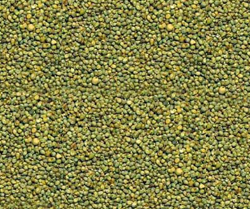- Email: sales@malharenterprises.net.in
- Phone: +91 9004684904
Millet
- Home / Millet
Millet(Bajra)
Description
Commonly known as pearl millet, bajra is one of the most widely grown varieties of millet. It is grown in bulk in Africa and India. It has been a staple diet for Indians since pre-historic times. Rajasthan is the largest producer of bajra in India. These tiny brown grains have a nutty and bitter aftersweet taste.
Features
1. High in Protein One cup of whole Bajra (160 grams) gives about 18.5 grams of protein. Very good source for Vegetarian.2. High in Fiber One cup of whole Bajra gives about 18 grams of fibre. This fibre will keep you fuller for a longer time and avoid you from binge eating.
3. Complete Protein for Vegetarians : Bajra Flour forms a complete protein when combined with legumes like rajma, moong dal, urad dal, toovar dal, chana dal.
4. Gluten Free : Great healthy option for those who are intolerant to Gluten. Bajra, the whole grain is far more healthier to use in Khichdi than making a Khichdi of rice and dal. Try Bajra, Whole Moong and Green Pea Khichadi
5. Good for Diabetics Being a whole grain, it creates a much lower surge in sugar levels compared to Bajra Flour. Bajra is rich in Magnesium which improves insulin response by lowering insulin resistance. Having very low magnesium will result in the pancreas not secrete enough insulin to control our blood sugar.
6. Relieves Constipation : Bajra being rich in insoluble fibre helps easy digestion and hence relieves constipation. Insoluble Fibre does not dissolve in water and goes through your stomach without being processed helping other foods move through your system and out. Insoluble Fibre keeps you healthier with a better digestive system.
7. Good for Heart Bajra is rich in Magnesium 100 grams of Bajra have 137 milligrams of Magnesium which is 50% of your recommend daily allowance (RDA). Magnesium helps maintain nerve function and normal heartbeat.


